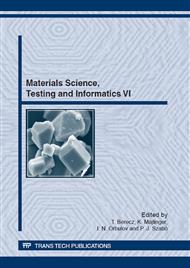p.409
p.415
p.419
p.424
p.430
p.436
p.442
p.448
p.455
Evaluation Methods of Antimicrobial Activity of Plastics
Abstract:
There are several methods to evaluate the antimicrobial efficiency of the plastics. In recent work we intended to collect these methods together and compare. There are some methods, which are basically used in the microbial practice for testing antibiotics, and give a good ground for testing other materials. Some other simple methods exist, which can also be used, so the contact between the sample and the inoculums can be solved in many ways.
Info:
Periodical:
Pages:
430-435
Citation:
Online since:
November 2012
Authors:
Keywords:
Price:
Сopyright:
© 2013 Trans Tech Publications Ltd. All Rights Reserved
Share:
Citation:


